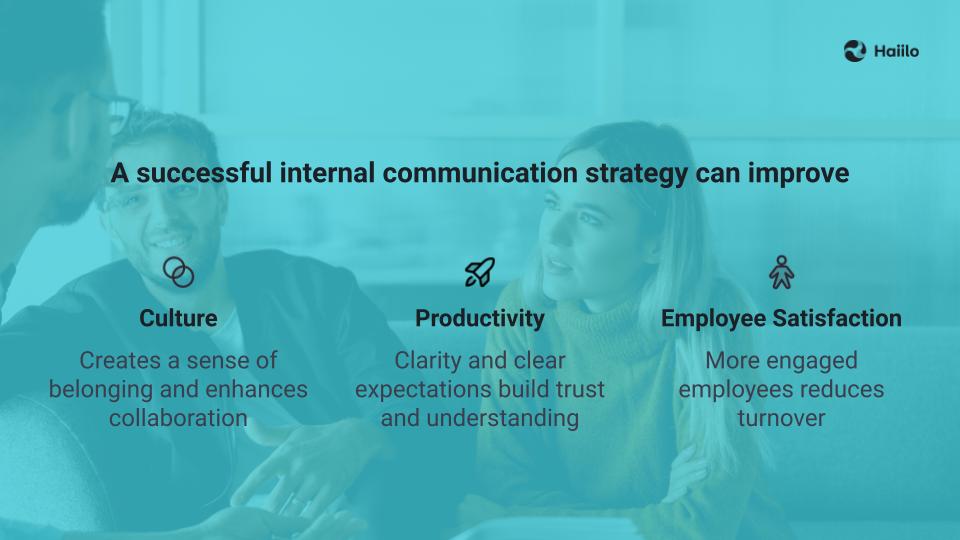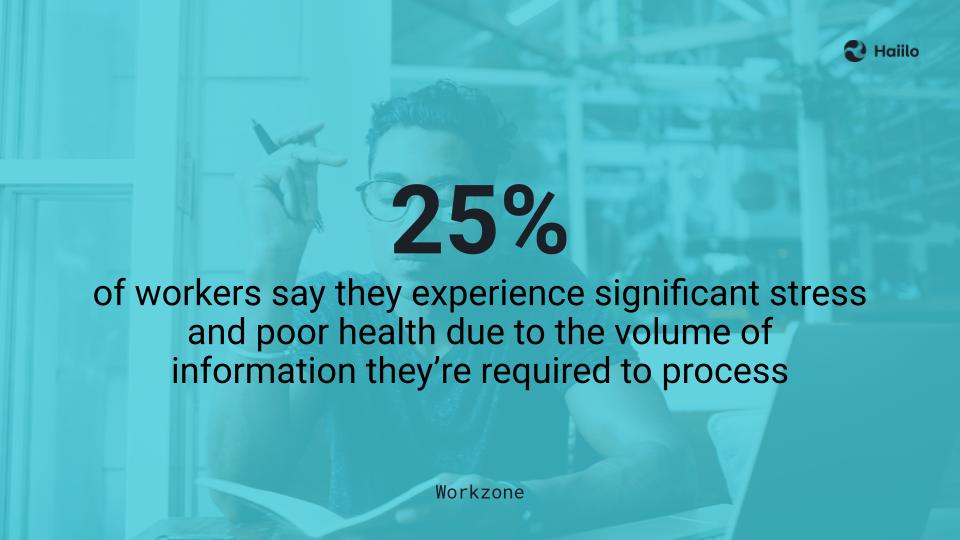One of the most pressing challenges facing organizations today is selecting the optimal internal communications software. As a company grows and expands into new markets, it becomes increasingly crucial to establish effective communication channels both within and outside the organization. This can include creating clear and concise messaging, implementing efficient communication tools and processes, and fostering a culture of open and transparent communication. As the company diversifies, ensuring streamlined communication becomes even more vital to maintaining productivity, collaboration, and overall success.
The sheer number of different types of internal communication tools and platforms available can make the decision difficult. Do you need an intricate intranet system or just a shared document drive? Should you focus on top-down communication tools or invest in platforms that encourage feedback from every level? These are the questions that often plague internal communication professionals, CMOs, CHROs, and other decision-makers.
At Haiilo, we’re driven by the vision of bridging communication gaps within organizations, building a space where every voice is heard and every message is received with clarity. We aim to revolutionize how businesses perceive and handle internal dialogues by connecting employees and promoting purposeful communication. Our commitment is rooted in the understanding that effective communication is the lifeblood of any thriving organization, ensuring alignment and building a cohesive corporate culture.
Through this article, we aim to shed light on some of the common types of internal communication, helping you decide which best aligns with your organizational needs.
Let’s dive in.
- What is Internal Communication?
- Top-Down Communication
- Bottom-Up Communication
- Horizontal Communication
- Diagonal Communication
- Information and Knowledge Management Communications
- Crisis Communication
- Change Management Communication
- A Mixed Approach
- How to Choose the Right Platform for Your Needs
- Assessing Business Needs
- Trial and Feedback
- Integration with Existing Systems
- Conclusion
Haiilo can help you connect with your employees effectively while building trust and boosting productivity.
What is Internal Communication?
When we talk about internal communication, we are referring to the strategic exchange of information and understanding between members of an organization. It’s the mechanism that ensures everyone, from the C-suite to the frontline employees, is aligned, visible, informed, and engaged.
A successful internal communication strategy goes beyond just passing messages – it creates a sense of belonging, enhances collaboration, and bolsters corporate culture. When executed efficiently, it is the driving force behind increased productivity, reduced turnover, and heightened employee satisfaction.
Now that remote work, hybrid office arrangements, and distributed teams are becoming the norm, the importance of robust internal communication cannot be understated.
💡More Insights: 8 Tips to Boost Employee Communications at Your Company
Understanding the Different Types of Internal Communication

Top-Down Communication
Picture top-down communication as a waterfall where information cascades from the top tiers of an organization’s hierarchy downward to the base. This method is primarily authoritative and directive – it’s the boss telling everyone else what to do and is one of the original (and most prevalent) types of internal communication.
Top-down comms ensures that all employees, regardless of their position, receive consistent and crucial information straight from the source. It’s particularly effective in organizations with a significant number of blue-collar workers, where there’s a need for clear, unambiguous directives and updates.
The primary purpose of top-down communication is to provide clarity. Whether it’s regarding organizational goals, policy updates, strategic shifts, or company announcements, this approach ensures that the management’s vision and directives are conveyed without distortion.
When it comes to facilitating top-down communication effectively, there is a range of options, from simple email to dedicated chat/direct messaging tools. These are basic but allow for the type of direct and authoritative communication that is required here.
📚Keep Reading: What is Corporate Culture, Why It Matters, and How to Build It

Bottom-Up Communication
Bottom-up communication stands out as one of the more powerful and transformative types of internal communication. Where traditional top-down methods disseminate messages from leaders to the broader workforce, bottom-up communication flips this dynamic, originating from the grassroots and flowing upward.
Bottom-up communication is an open door for employees to voice their concerns, ideas, feedback, and opinions. Instead of just being passive recipients of information, employees actively contribute to the organization’s narrative. This form of communication is designed to be democratic, valuing each individual’s perspective, irrespective of their position in the corporate hierarchy.
The benefits of such an inclusive approach are manifold. First and foremost, it creates a sense of belonging and value among employees – when individuals realize that their opinions matter and can influence change, it enhances their engagement and commitment to the organization. It’s a testament to the company’s respect and trust in its workforce.

Bottom-up communication is also an absolute goldmine for innovation. Fresh perspectives and diverse opinions often lead to breakthrough ideas – the next change in strategy or product innovation could emerge from a casual conversation or feedback session.
Additionally, this communication approach plays a key role in continuous improvement. Management can gain insights into practical challenges and areas of improvement, often overlooked in higher-level discussions, simply by receiving direct feedback from those on the ground.
In practice, bottom-up communication takes many forms. Suggestion boxes, both physical and digital, are a classic example – they provide an avenue for employees to share ideas or concerns anonymously. Employee feedback surveys offer structured insights into various aspects of the workplace, from work conditions to management effectiveness. Town hall meetings, on the other hand, create an interactive platform where employees and leaders can engage in direct dialogue, discussing achievements, challenges, and future plans.
Don’t brush bottom-up communication as a trend – it should be a necessity in the modern workplace. As organizations strive for adaptability and innovation, embracing this form of communication ensures that they tap into the collective wisdom of their most valuable asset: their people.

Horizontal Communication
Horizontal communication plays an important part when it comes to organizational communication structures, as it links departments, teams, and individuals at similar hierarchical levels. It is this side-to-side, peer-to-peer interaction that breaks down silos and enables a culture of collaboration and mutual understanding.
This communication structure, by its very nature, is collaborative. It’s the daily interactions among team members, the brainstorming sessions between departments, or the cross-functional meetings that drive projects forward.
Unlike the directive nature of top-down or feedback-oriented bottom-up approaches, horizontal communication is more about dialogue, exchange, shared goals, and coordination.
This form of communication is important for several reasons:
- Eliminating Silos – In larger organizations, it’s not uncommon for departments to operate in isolation, leading to information silos. Horizontal communication breaks down these barriers, ensuring a free flow of information and ideas.
- Streamlining Operations – Horizontal communication ensures a clear understanding of roles, responsibilities, and timelines by facilitating dialogue between departments. This clarity is essential for the smooth execution of projects and prevents potential overlaps or gaps in responsibilities.
- Promoting Innovation – When teams from different departments or specialties communicate, they bring diverse perspectives to the table. This diversity can lead to innovative solutions to challenges as individuals combine their expertise to think outside the box.
Slack captured it nicely when they shared their thoughts on what success looks like for horizontal communication:
Proper horizontal communication should create a feeling of unity, ensuring everyone is working toward the same goals together and not competing against one another or higher-ups.
The digital age has equipped us with a range of tools designed specifically to enhance horizontal communication. Chat applications allow for real-time conversations, whether it’s a quick check-in or a more extended discussion. Discussion boards provide platforms where teams can collaboratively manage projects, assign tasks, and track progress. Video conferencing tools facilitate virtual team meetings, ensuring face-to-face interactions even in remote working setups.
In essence, horizontal communication is the glue that holds various facets of an organization together. It ensures that the left hand knows what the right hand is doing, creating a harmonious and efficient workplace environment. As organizations grow and evolve, robust horizontal communication channels will be an absolute must when it comes to ensuring agility, adaptability, collaboration, and overall success.
🤓Read on: 9 Efficient Ways to Break Down Silos in Your Organization
Diagonal Communication
The organizational dynamics of today’s businesses are constantly evolving. While traditional types of internal communication have their place, the complexity and rapid pace of modern projects often demand more flexible and agile communication structures. This is where diagonal communication excels – it allows personnel to transcend both hierarchy and departmental divisions and break traditional boundaries.
Diagonal communication is like the wildcard of communication methodologies. It does not adhere to the conventional vertical or horizontal paths – instead, it offers a diagonal route, cutting across various layers and departments.
Imagine a scenario where a junior graphic designer from the marketing team needs clarity on budget allocations for a campaign and directly reaches out to a senior executive in finance. This bypasses several layers, ensuring quicker resolutions and building a culture of accessibility.
While it is a somewhat unorthodox structure, there are several advantages to going diagonal:
- Efficiency and Speed – Traditional communication routes, especially in larger organizations, can sometimes resemble a relay race, passing information from one level to another, often leading to delays. Diagonal communication reduces these handoffs, ensuring faster decision-making and problem resolution.
- Empowerment and Inclusivity – Facilitating direct interactions between different levels and departments means that diagonal communication empowers employees. It instills a sense of trust and value, reinforcing the idea that every team member, regardless of their position, has a voice that’s valued.
- Holistic Perspective – Diagonal interactions often bring together diverse expertise and viewpoints. A junior from one team might provide fresh insights, while a senior from another department offers experience-based wisdom. This amalgamation leads to well-rounded decisions and innovative solutions.
While diagonal communication offers several advantages, it’s essential for organizations to create an environment that supports and encourages it. This includes implementing a culture of openness, where senior leaders are approachable and junior employees feel confident in reaching out. Tools that promote cross-departmental interactions, like company-wide forums, inter-departmental meetings, or collaboration platforms, can further facilitate diagonal dialogues.
Diagonal communication is one of the more potent types of internal communication as businesses tackle the multifaceted challenges of the modern corporate world. It promotes efficiency and collaboration while ensuring that the organization remains agile and adaptable. Implementing diagonal communication strategies means that companies can usher in a new era of holistic and efficient communication.

Information and Knowledge Management Communications
In the realm of internal communications, the transfer and management of knowledge within an organization is the name of the game. Information communication, or knowledge management communication, is about more than just conveying data – it’s about ensuring that the right information reaches the right people at the right time and that this information is retained, understood, and utilized effectively.
The issue many organizations face is not a lack of information but rather how to manage, share, and sustain it without overwhelming their employees. The ability to filter, curate, and distribute knowledge is crucial – an overloaded employee can be just as uninformed as one who lacks access to information because excess can lead to disengagement.
Efficient knowledge management communication ensures that employees are aware of the resources available to them, understand how to use these resources, and can contribute their insights back into the company’s knowledge pool. This bi-directional flow of information cultivates an informed workforce capable of innovation and agility.
Crisis Communication
When unforeseen circumstances strike, the fortitude of an organization’s internal communication framework is truly tested. Crisis communication is integral to the continuity and resilience of an organization – it’s about maintaining transparency, providing clear directives, and sustaining morale during challenging times.
A robust crisis communication strategy is proactive, not reactive. It involves having predefined channels and protocols that can swiftly disseminate information to prevent misinformation and panic. Excelling in this area means that the business will also support the emotional and psychological well-being of employees by ensuring that their concerns are heard and addressed promptly.

Change Management Communication
The only constant in business is change. Managing this change effectively is a testament to a company’s adaptability and is heavily dependent on how well the change is communicated internally. Change management communication is about guiding employees through the transition, addressing their apprehensions, and garnering their support for new initiatives.
This communication type is a delicate balance between providing enough information to clarify the need for change and enough empathy to understand the impact of these changes on employees. It involves narratives that connect the change to the organization’s broader purpose, making it a shared mission rather than a top-down directive.
🌱Learn about Business Transformation in 2023: The Guide for Successful Implementation
A Mixed Approach
In all likelihood, your business is going to want to implement and promote a mixed approach when it comes to the types of internal communication. No organization in the 21st century can thrive with only top-down communication, for example – feedback from all levels of the company is integral to employee happiness (and reducing turnover) as well as innovation. At the same time, there must always be some degree of direction from the top. After all, the overall strategy for company growth has to be defined and rolled out from somewhere.
When it comes to choosing the right platform for your company, bear in mind that you do not need to (and should not) ‘choose’ one communication type – embrace the strengths of each as they apply to your ecosystem.
How to Choose the Right Platform for Your Needs
While it is fantastic that developers have taken notice of the increased importance of communication platforms, this has resulted in an issue for many businesses entering the market: the vast number of options is overwhelming. With so many tools to choose from, each boasting its unique features and advantages and targeting different types of internal communication, how do you pinpoint the ideal business communication software fit for your organization?
The process entails more than just a comparison of functionalities. Read on for a step-by-step guide to help streamline the selection process and ensure that your choice amplifies your organization’s communication dynamics.
Assessing Business Needs
Begin by laying the foundation. Engage in introspection and dissect your organization’s communication patterns and requirements. Do you primarily rely on top-down communication? Or is there a significant emphasis on cross-departmental collaborations? Perhaps you’re in dire need of a simple document-sharing platform. Simply by pinpointing your primary needs and types of internal communication, you can filter out software that, despite being high-quality, might not align with your organizational structure.
Questions to ponder include:
- What are the communication challenges that the organization is currently facing?
- Are there specific departments or teams that struggle with communication more than others?
- How tech-savvy is the majority of the workforce?
- What’s the organization’s long-term vision in terms of growth and communication expansion?
Trial and Feedback
Once you’ve zeroed in on a few potential platforms, it makes sense to test the waters before diving in. Most software solutions offer trial versions or demo periods – utilize these to deploy the software on a smaller scale initially.
Encourage teams to use the platforms actively and, most importantly, gather their feedback. Understand their challenges, what they loved, and what felt unnecessary. Employees are the end-users, and their feedback is invaluable in ensuring the software facilitates rather than hinders communication.
Integration with Existing Systems
Every organization utilizes a set of tools for various functions – be it CRM systems, project management tools, HR software, or other systems. The new communication platform should not disrupt or conflict with these existing systems. Instead, it should ideally integrate seamlessly, creating a cohesive digital workspace – so be sure to check for compatibility, API availability, and integration support.
Remember, the goal here is to augment and streamline processes, not add another layer of complexity.
Throughout the selection process, remember that choosing the right communication platform is a strategic decision that impacts every facet of an organization. When you take the time to truly understand needs, value feedback, and ensure compatibility, you pave the way for enhanced communication and a more unified organizational culture.
🔗Continue reading: What is the Digital Employee Experience and How to Get It Right
Conclusion
Choosing the right internal communication type is like finding the perfect pair of shoes. Just as an ill-fitting shoe can cause discomfort and impede mobility, a mismatched communication style can disrupt workflows and reduce efficiency – both of which will inevitably lead to general dissatisfaction within the organization. On the other hand, the right fit enhances performance, promotes comfort, and boosts overall satisfaction.
The digital age has blessed us with a lot of choices in software solutions, each with its unique offerings. The drawback of this abundance is the challenge of choice – which is why it is all the more important to align your organization’s specific types of internal communication with the right tool to derive maximum benefit. A hastily chosen tool, no matter how advanced or well-respected in the industry, will fail to deliver results if it doesn’t resonate with the organization’s communication patterns.
At Haiilo, we recognize the significance of this alignment. Our platform is designed to offer a holistic solution, catering to a diverse range of communication needs. We believe in connecting people to purpose, and our platform serves as a bridge that facilitates this connection.










